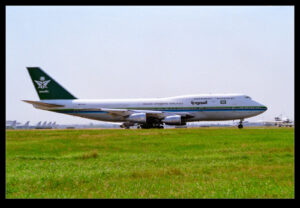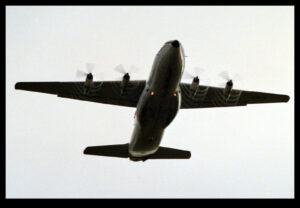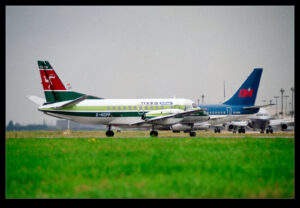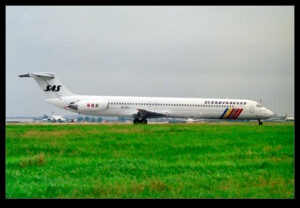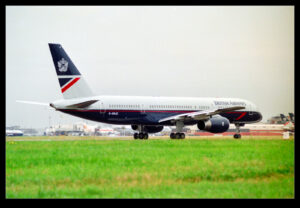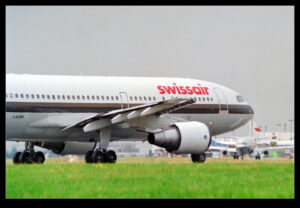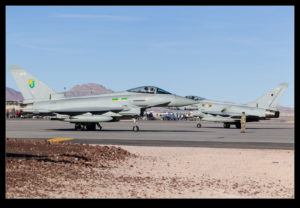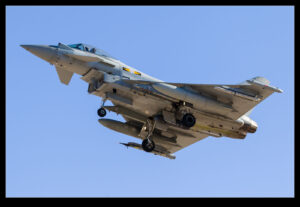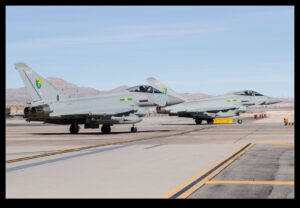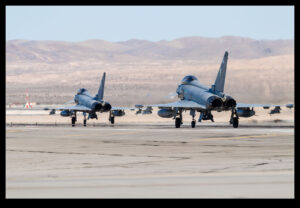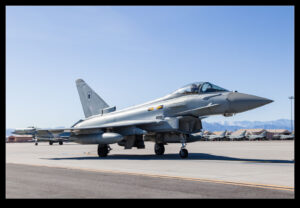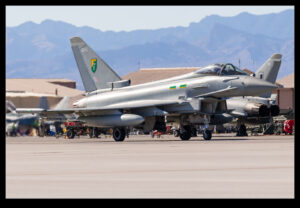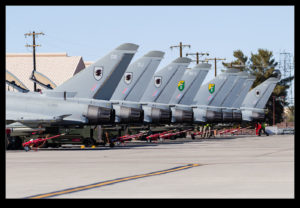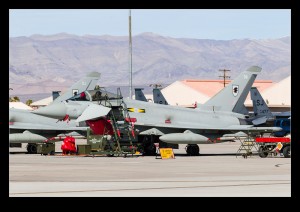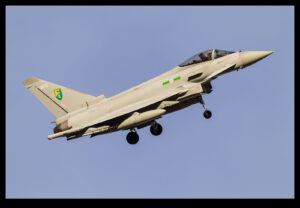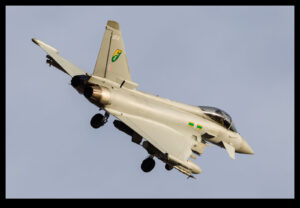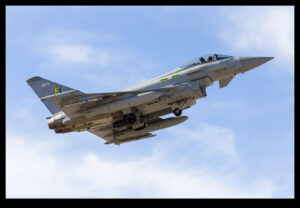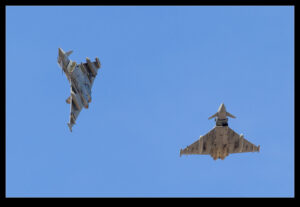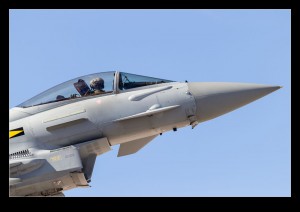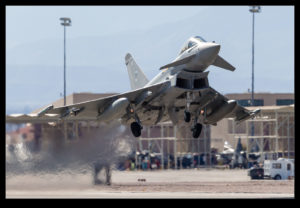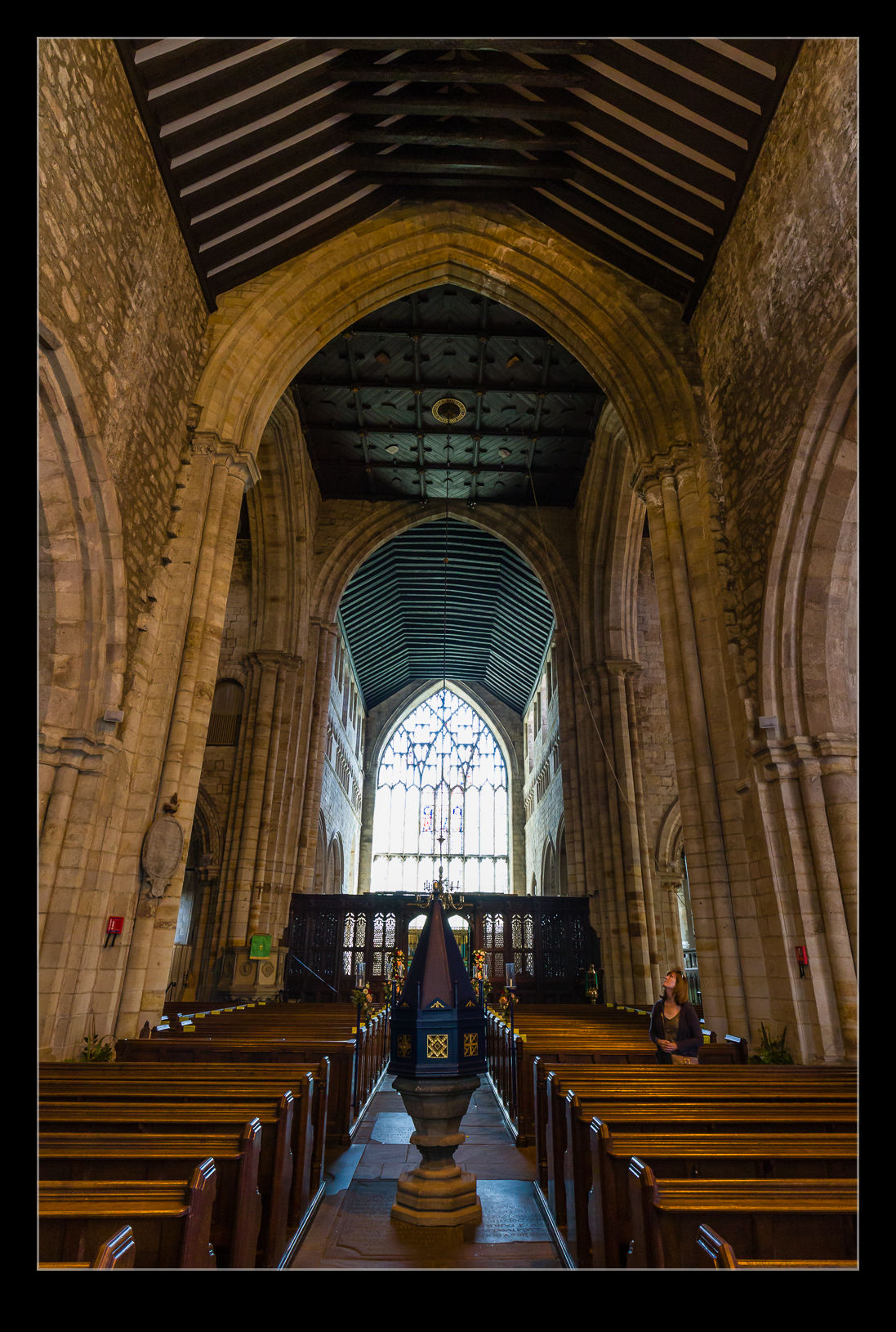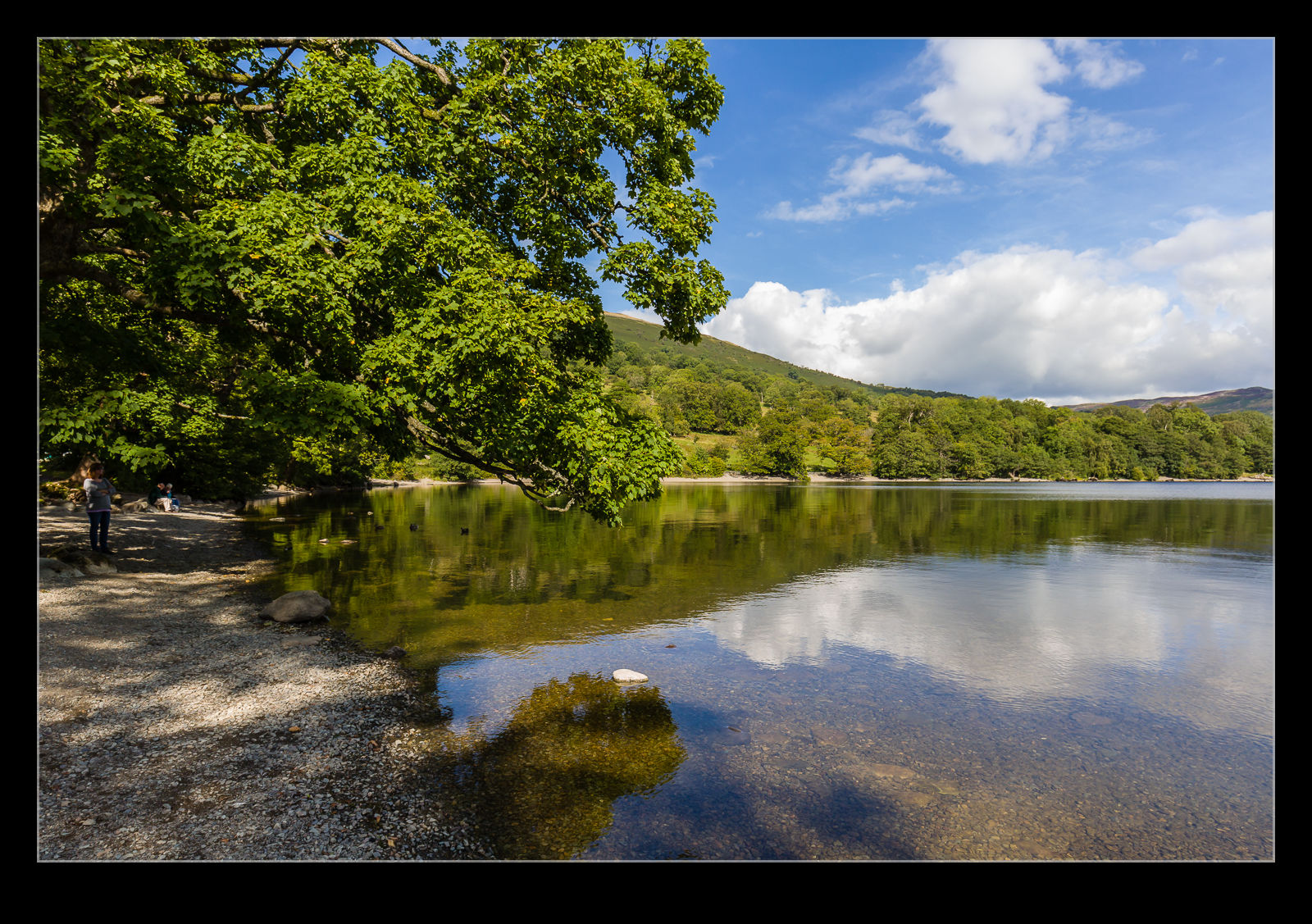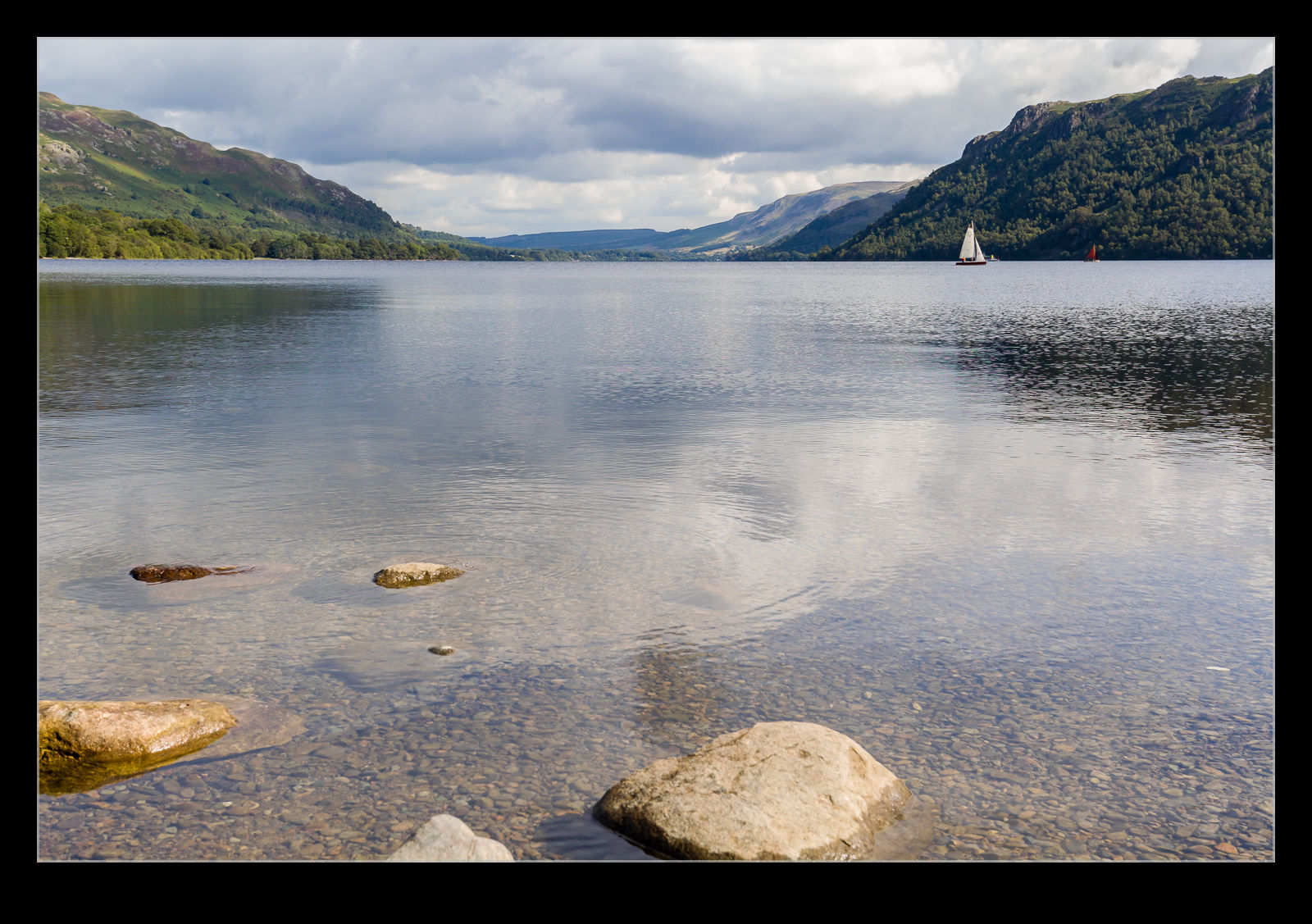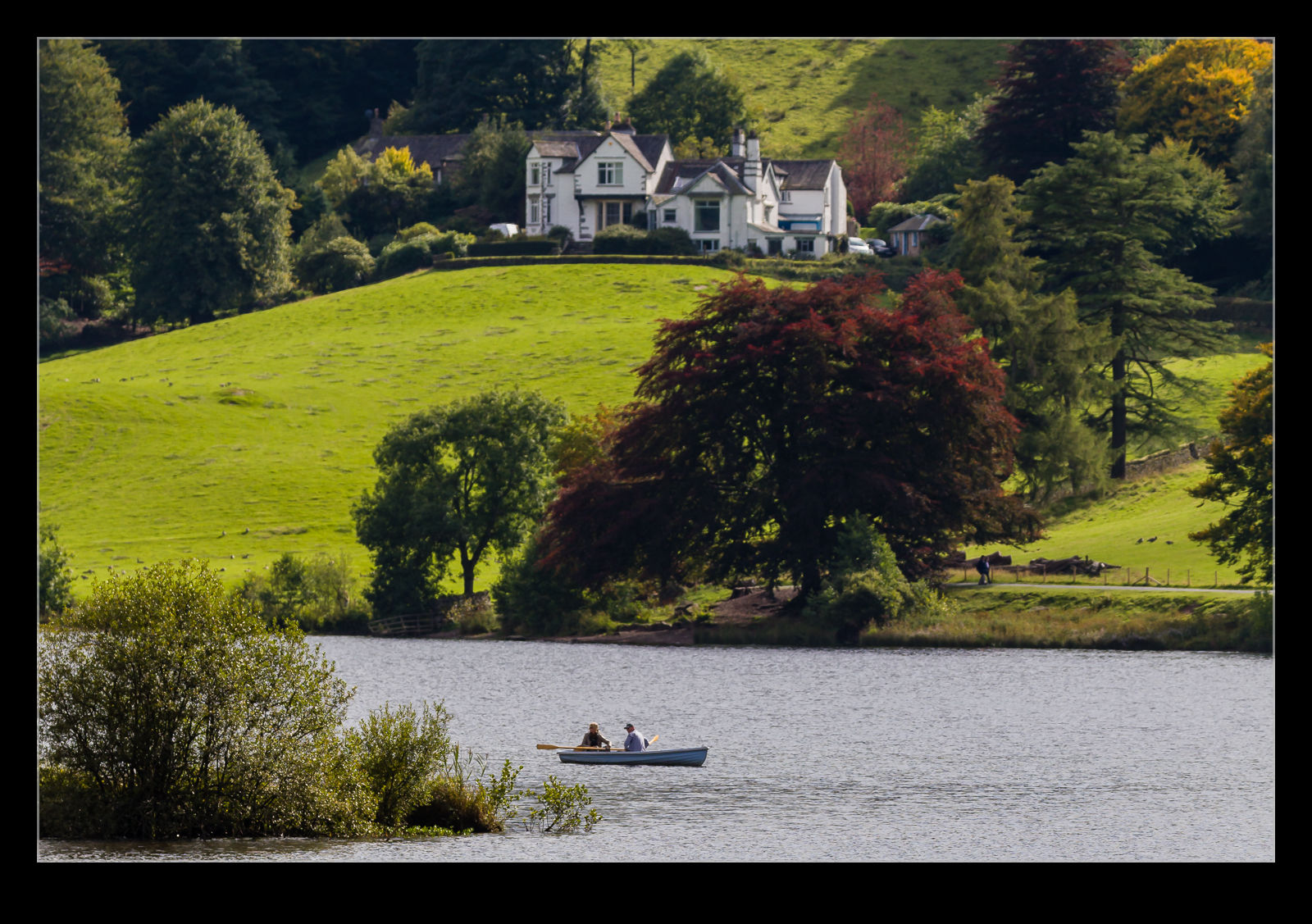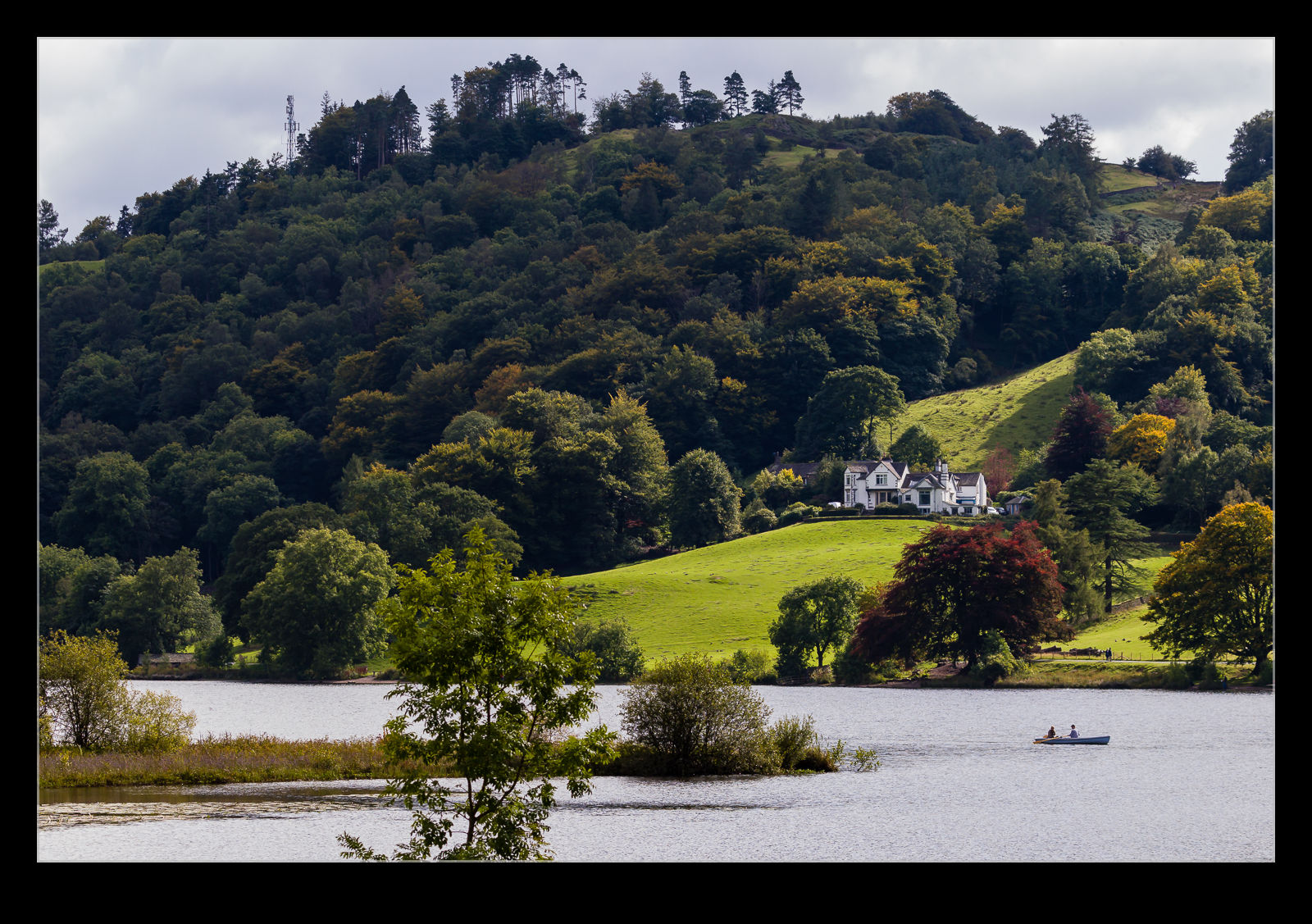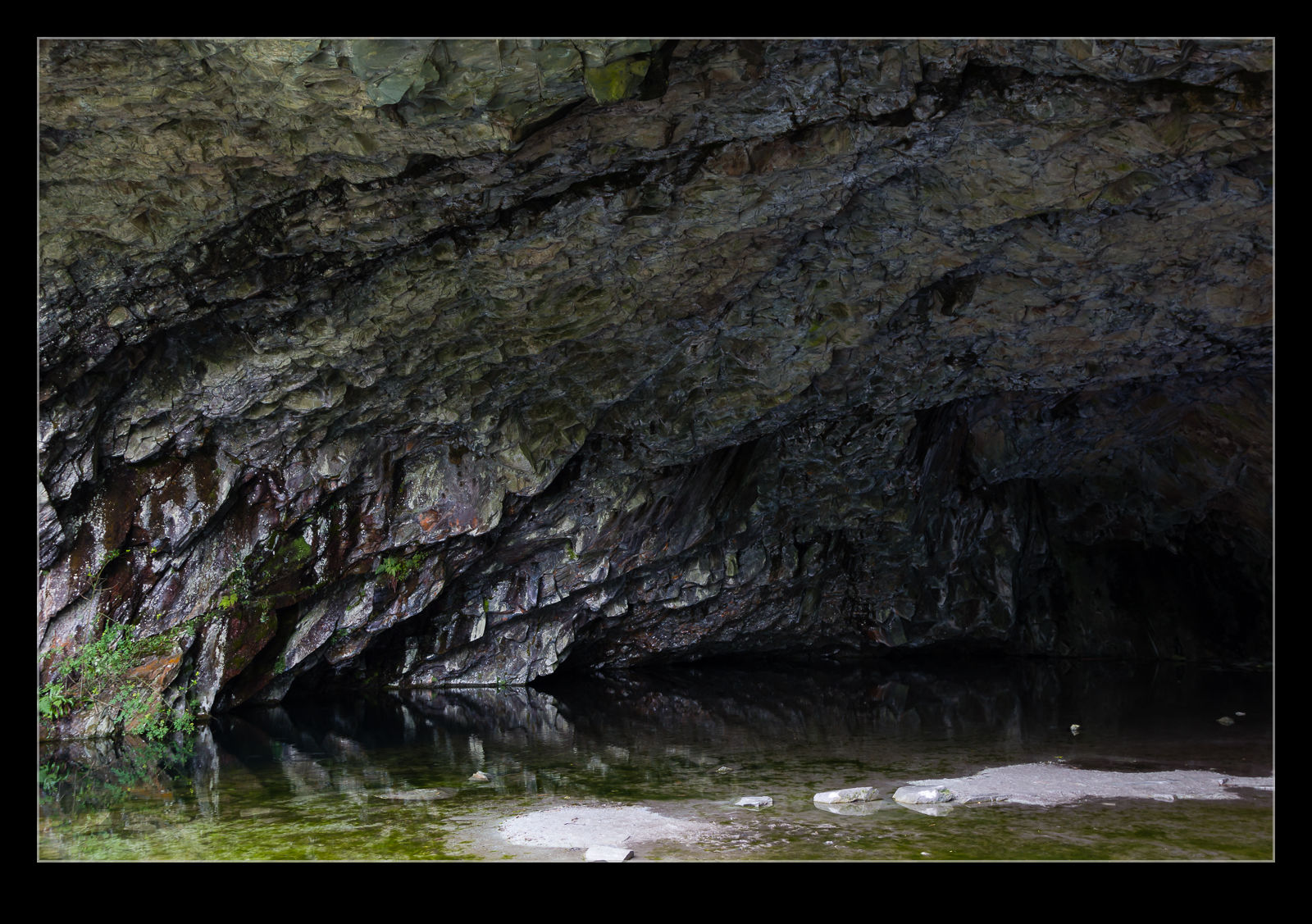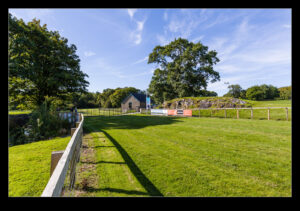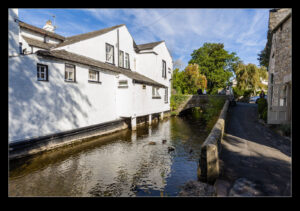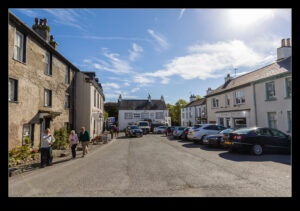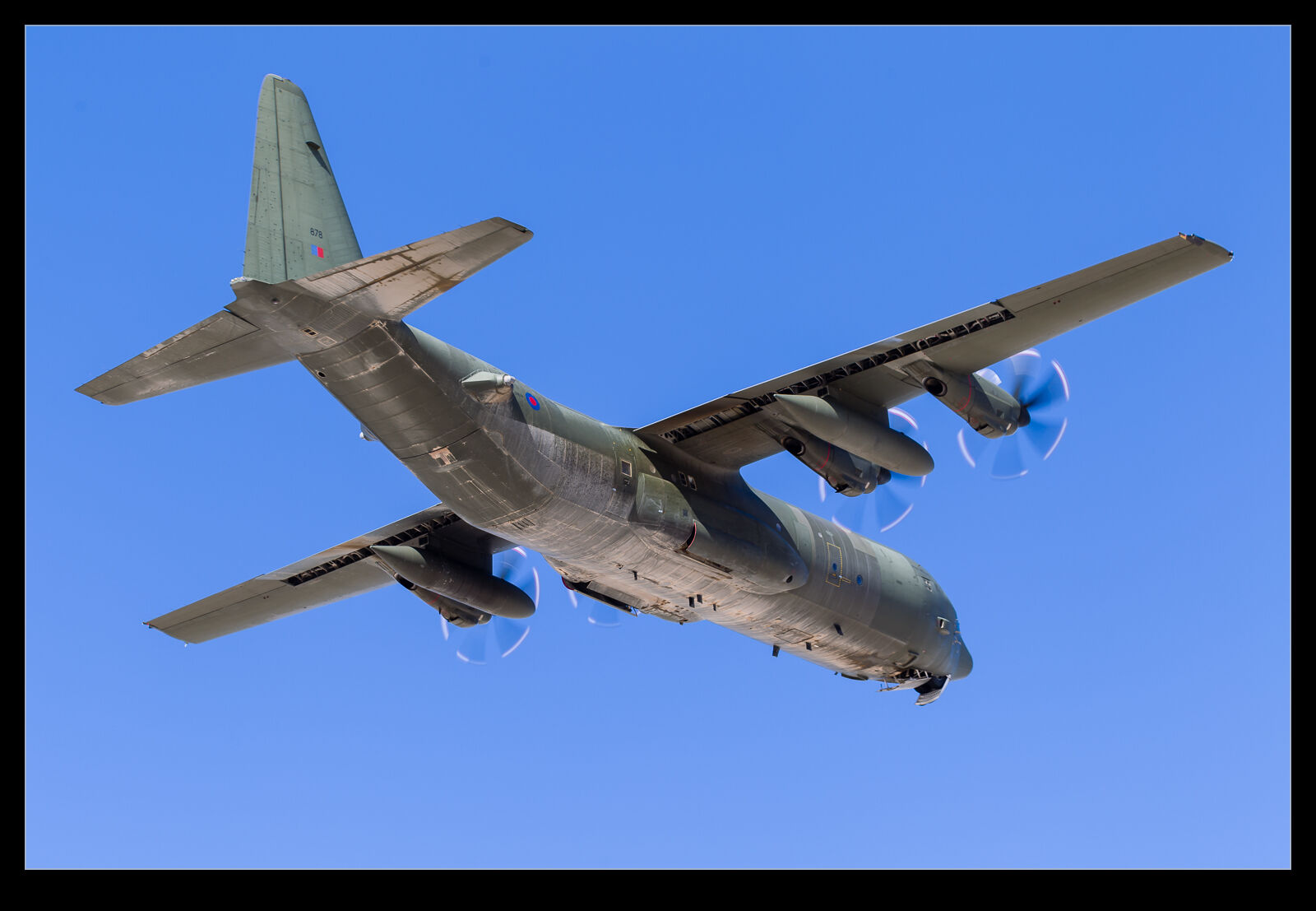 Red Flag may be well known for the fast jet activity but the jets aren’t the only ones that get to play. The transports also get to have a role. One of the exercises earlier this year included the U.K. RAF. They brought along a C-130 Hercules. I got to shoot it a couple of times. One thing that was clear as the aircraft took off was that the bottom of the fuselage was very dirty. I think it was safe to say that it had been landing on some rough strips somewhere out on the range.
Red Flag may be well known for the fast jet activity but the jets aren’t the only ones that get to play. The transports also get to have a role. One of the exercises earlier this year included the U.K. RAF. They brought along a C-130 Hercules. I got to shoot it a couple of times. One thing that was clear as the aircraft took off was that the bottom of the fuselage was very dirty. I think it was safe to say that it had been landing on some rough strips somewhere out on the range.
Tag Archives: U.K.
I Can Hear You Coming
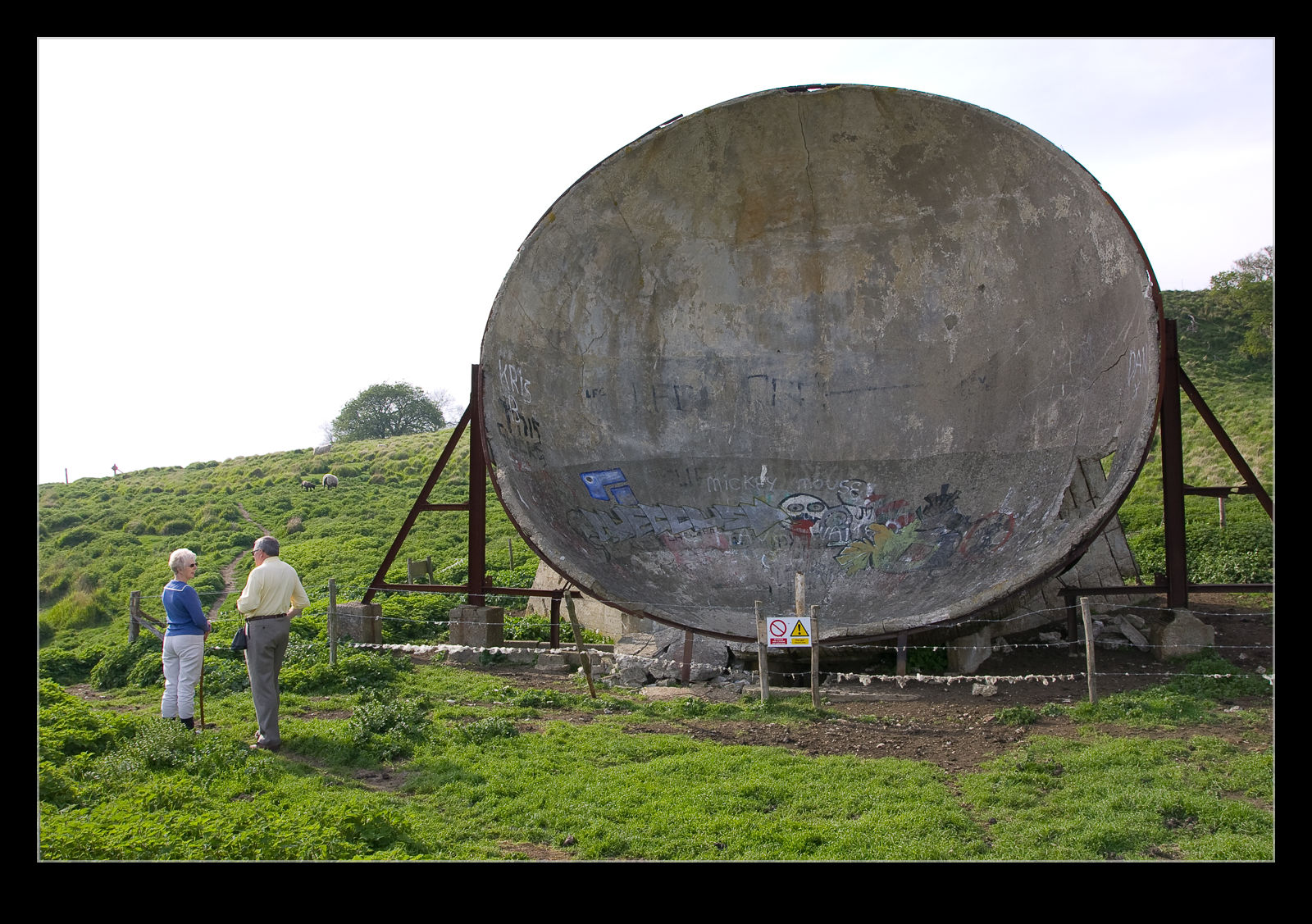 In the days before radar, there were other techniques that were used for trying to detect inbound enemy aircraft. One of them was the use of sound. Dotted along the southeast coast of the U.K. are a number of locations with devices for focusing sound. One of them is located in the hills above Hythe. This is one of the simpler forms that were used. Despite the age, the contract structure is still in good shape. With the introduction of radar, these sites were redundant but they do provide an insight into the trying of any idea to gain an advantage in another era.
In the days before radar, there were other techniques that were used for trying to detect inbound enemy aircraft. One of them was the use of sound. Dotted along the southeast coast of the U.K. are a number of locations with devices for focusing sound. One of them is located in the hills above Hythe. This is one of the simpler forms that were used. Despite the age, the contract structure is still in good shape. With the introduction of radar, these sites were redundant but they do provide an insight into the trying of any idea to gain an advantage in another era.
Pan Am
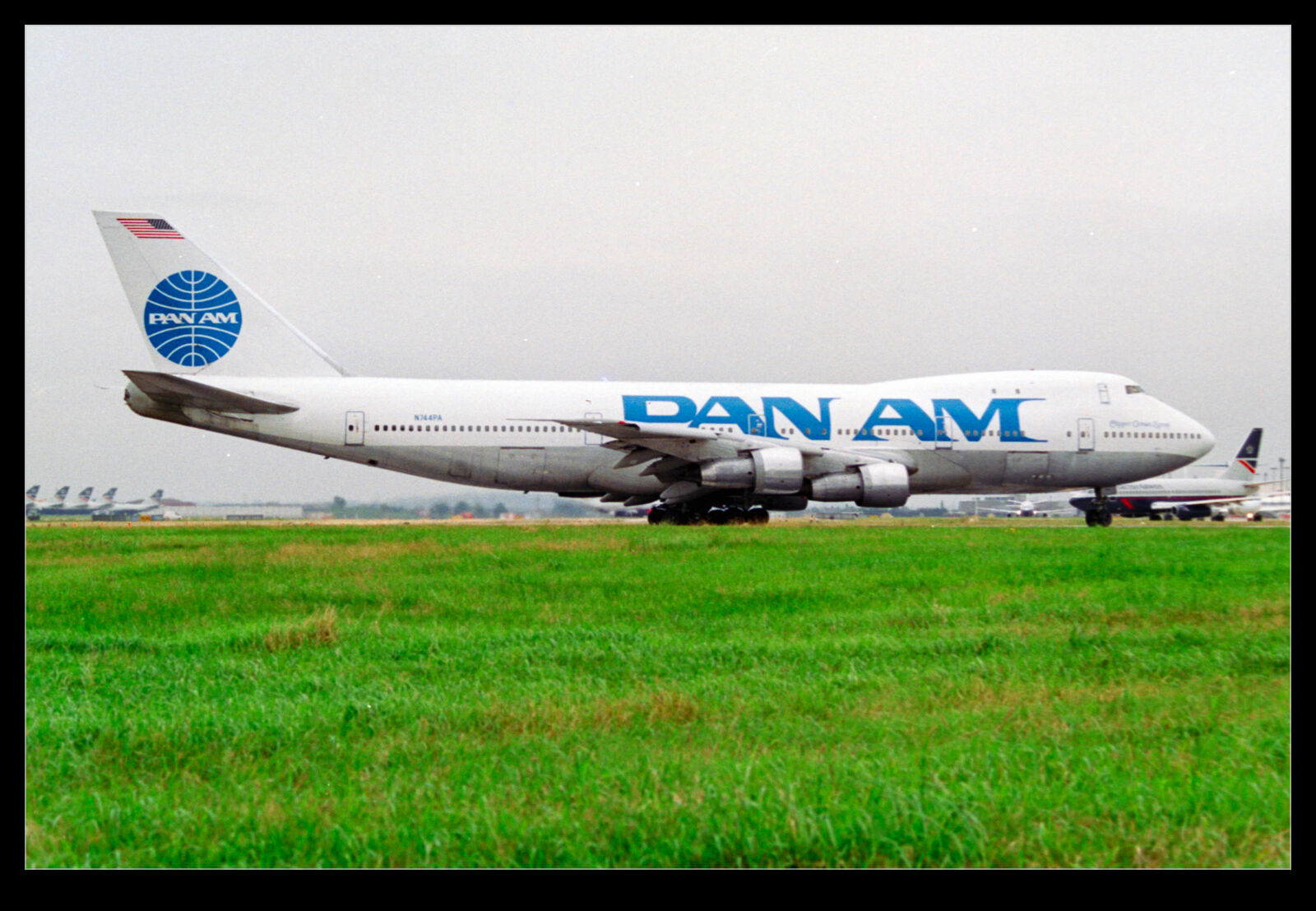 Summer of 88 meant I had probably the coolest job someone like me could ever have. My summer break was spent working for the Civil Aviation Authority (CAA) in the UK. I was involved in noise measuring work around airports in London and the vicinity. I spent a few days inside the fence at Heathrow recording all sorts of things taking off.
Summer of 88 meant I had probably the coolest job someone like me could ever have. My summer break was spent working for the Civil Aviation Authority (CAA) in the UK. I was involved in noise measuring work around airports in London and the vicinity. I spent a few days inside the fence at Heathrow recording all sorts of things taking off.
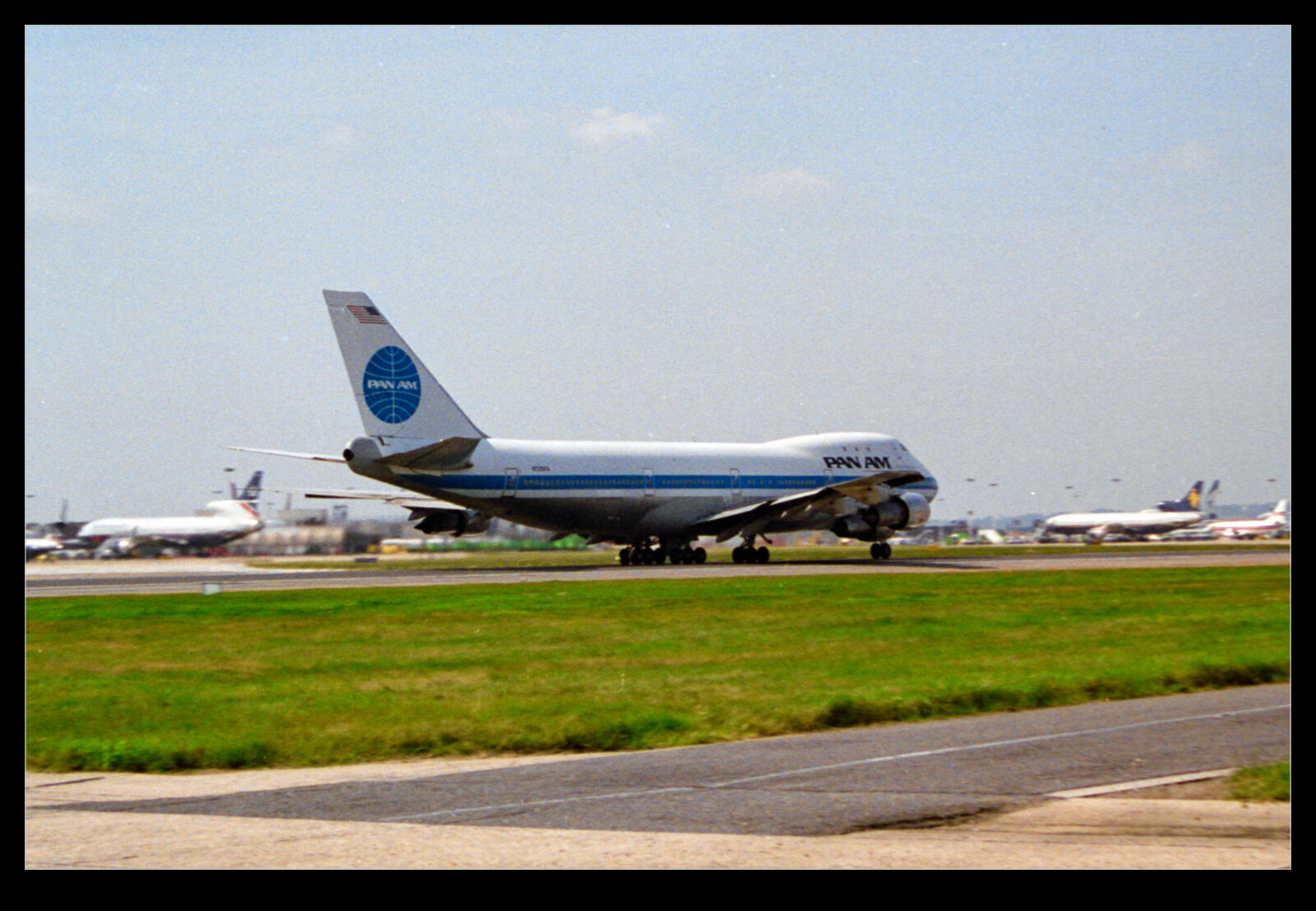 I did get some photos while there when it didn’t interfere with making recordings of sound levels. In those days, Pan Am 747s were a regular at Heathrow and here are a couple of their planes heading back across the water. They also had 727s at Heathrow supporting routes to Germany. That was a hangover from the post war split of responsibilities and probably seems anachronistic now.
I did get some photos while there when it didn’t interfere with making recordings of sound levels. In those days, Pan Am 747s were a regular at Heathrow and here are a couple of their planes heading back across the water. They also had 727s at Heathrow supporting routes to Germany. That was a hangover from the post war split of responsibilities and probably seems anachronistic now.
80s Airliners
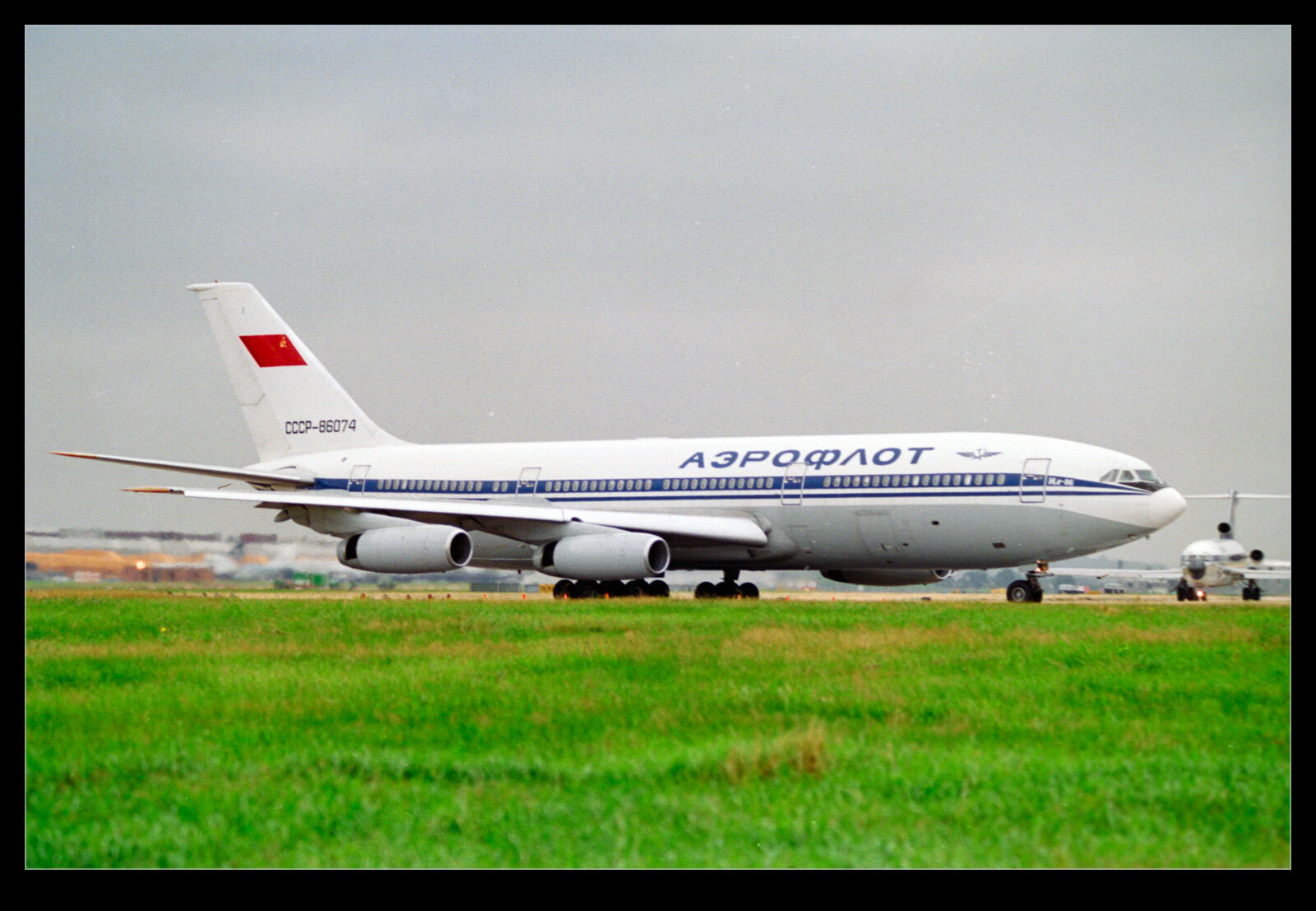 In previous posts I have talked about the program I am going through the scan all of my old negatives and transparencies. It is a far speedier process than I used to use but it is still pretty time consuming and I am about a third of the way through the collection. It will depend on how many rainy weekend days I get as to how quickly I go through them. Something I am discovering as I go is that I have a variety of shots I had completely forgotten about. Over the years I have gone through the sheets of negatives from various aviation events that I wanted shots from. I was pretty familiar with what was there. What I hadn’t realized was that my old film days would often include two or three shots of an aviation topic in amongst a bunch of other shots.
In previous posts I have talked about the program I am going through the scan all of my old negatives and transparencies. It is a far speedier process than I used to use but it is still pretty time consuming and I am about a third of the way through the collection. It will depend on how many rainy weekend days I get as to how quickly I go through them. Something I am discovering as I go is that I have a variety of shots I had completely forgotten about. Over the years I have gone through the sheets of negatives from various aviation events that I wanted shots from. I was pretty familiar with what was there. What I hadn’t realized was that my old film days would often include two or three shots of an aviation topic in amongst a bunch of other shots.
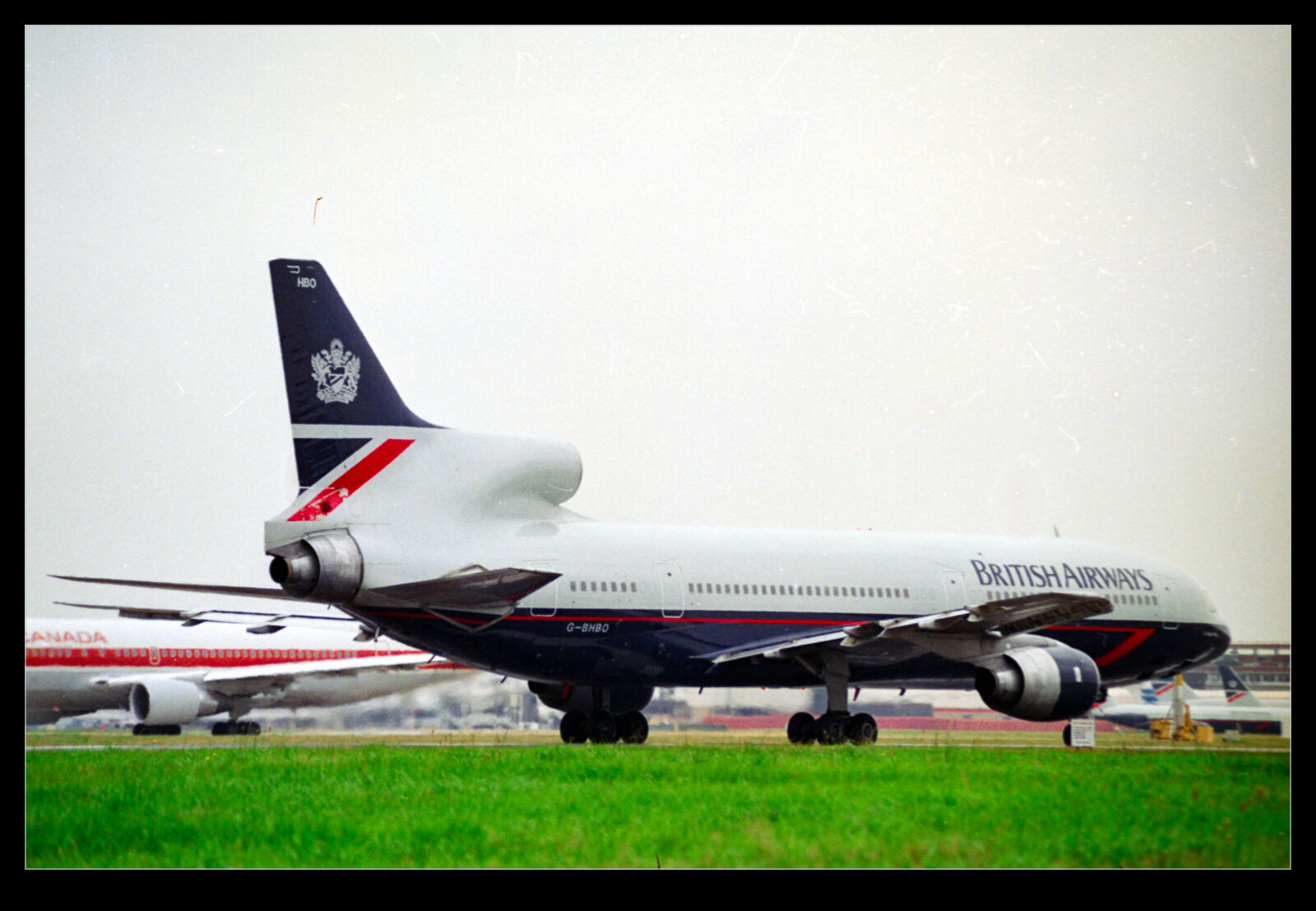 I have been coming across all sorts of shots, both civil and military that I had forgotten about. The majority of them are airliners, some of which are types now out of service and occasionally airlines that don’t exist anymore. Old 747-100s, some early Airbuses, 727 and 737-200, the occasional Ilyushin and even a Shorts Belfast show up. Needless to say there are some appearances by Concorde too.
I have been coming across all sorts of shots, both civil and military that I had forgotten about. The majority of them are airliners, some of which are types now out of service and occasionally airlines that don’t exist anymore. Old 747-100s, some early Airbuses, 727 and 737-200, the occasional Ilyushin and even a Shorts Belfast show up. Needless to say there are some appearances by Concorde too.
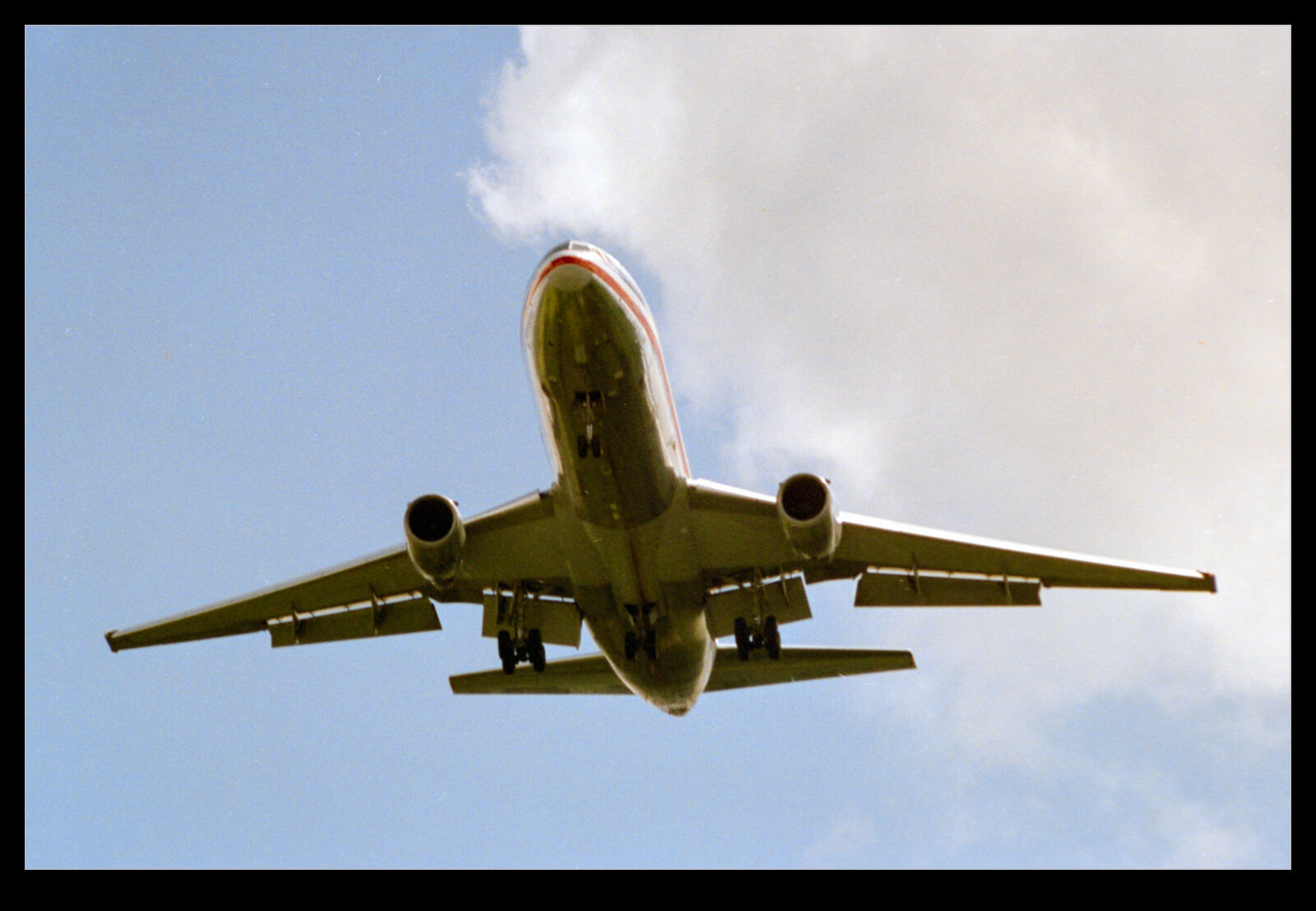 A combination of poor technique, less than ideal conditions and some less than pristine negatives means that these shots are not going to be gracing the walls any time soon. However, they are an interesting reminder of things that have gone. I wish I had more comprehensive coverage of the time but I actually didn’t take that many pictures at that time. A tad disappointing but I can’t change it now.
A combination of poor technique, less than ideal conditions and some less than pristine negatives means that these shots are not going to be gracing the walls any time soon. However, they are an interesting reminder of things that have gone. I wish I had more comprehensive coverage of the time but I actually didn’t take that many pictures at that time. A tad disappointing but I can’t change it now.
Back to My Roots with the Typhoons
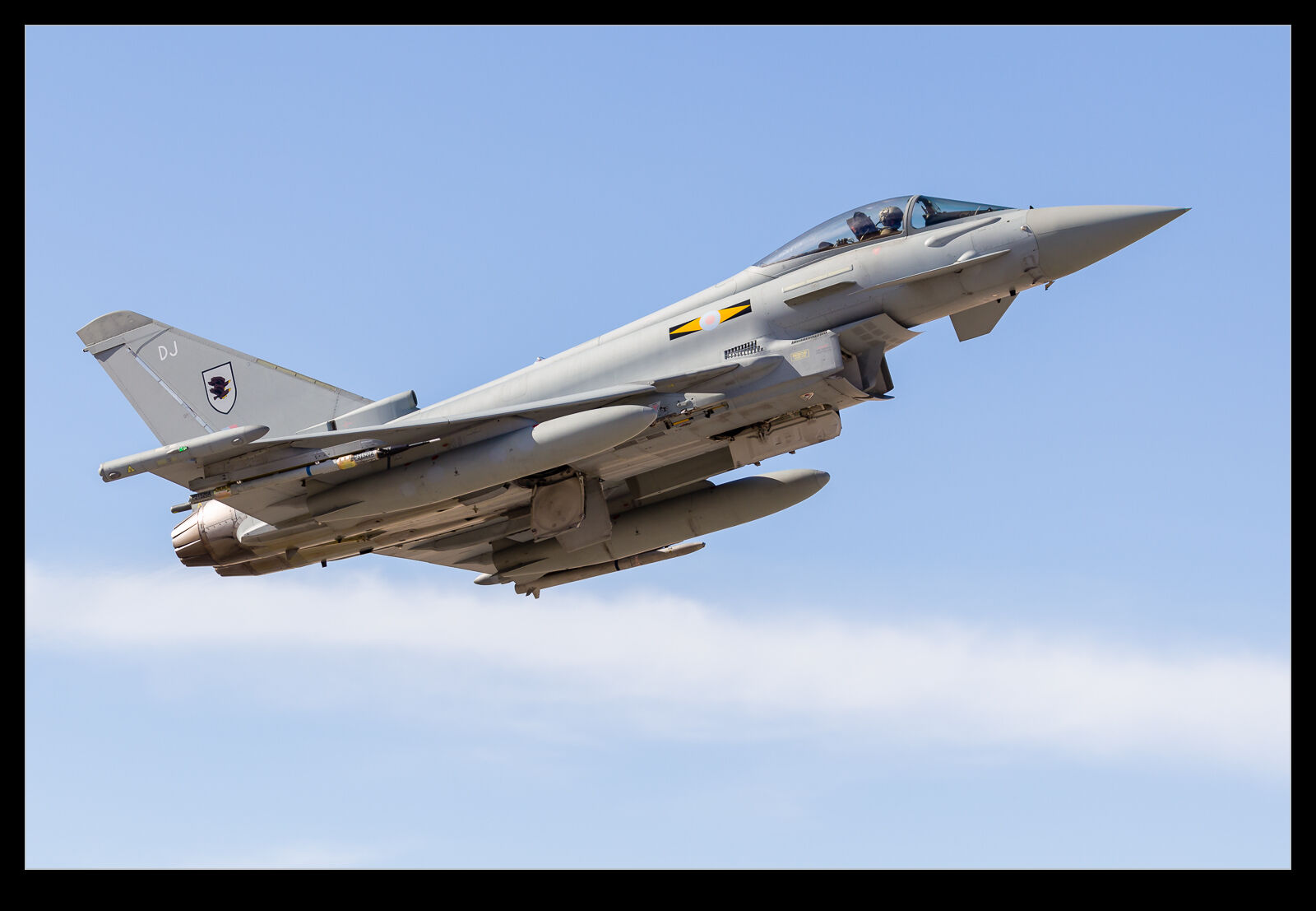 The Brits were at Red Flag in numbers too for 16-1. An E-3D Sentry was part of the AWACS fleet while a C-130J Hercules launched each day I was there. Judging by the dust and dirt on the underside, they were landing on rough strips out on the ranges during their missions. However, the thing I was most looking forward to seeing was the Typhoon. The RAF brought eight jets from 3 and 11 Squadrons. Most days six of them launched.
The Brits were at Red Flag in numbers too for 16-1. An E-3D Sentry was part of the AWACS fleet while a C-130J Hercules launched each day I was there. Judging by the dust and dirt on the underside, they were landing on rough strips out on the ranges during their missions. However, the thing I was most looking forward to seeing was the Typhoon. The RAF brought eight jets from 3 and 11 Squadrons. Most days six of them launched.
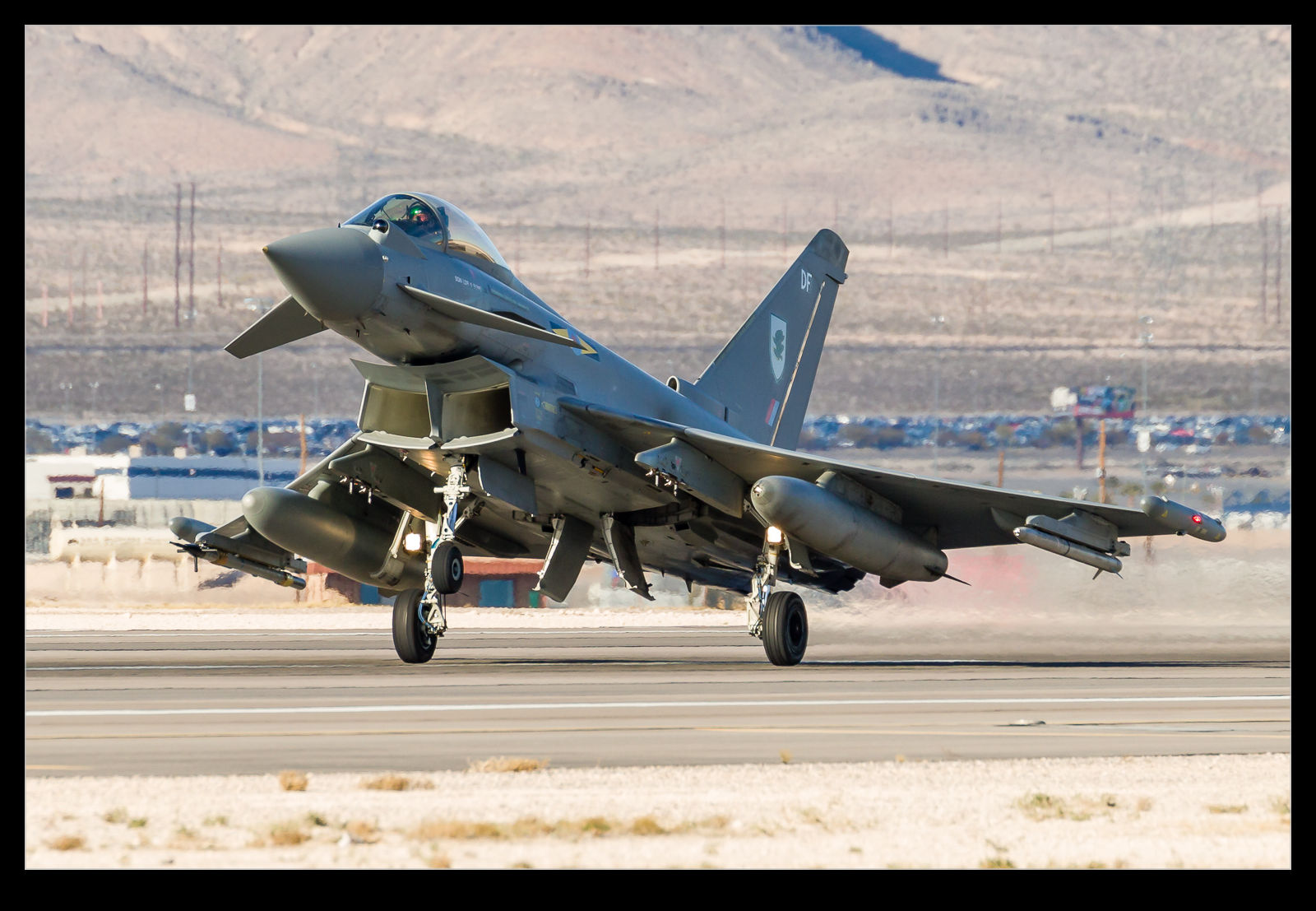 In my youth, I worked on what was to become the Typhoon in my BAE days. I was an aerodynamicist looking at airframe loading and the possible flight envelope for the first flight. I was not looking forward to the job when I was given it but working on loads turned out to be a great task and taught me a lot about structural limits, flight controls and the process for expanding the flight envelope. A mentor of mine had told me it sounded dull but was very valuable and he was spot on. I guess he is a smart guy because he has gone on to be rather successful in the company!
In my youth, I worked on what was to become the Typhoon in my BAE days. I was an aerodynamicist looking at airframe loading and the possible flight envelope for the first flight. I was not looking forward to the job when I was given it but working on loads turned out to be a great task and taught me a lot about structural limits, flight controls and the process for expanding the flight envelope. A mentor of mine had told me it sounded dull but was very valuable and he was spot on. I guess he is a smart guy because he has gone on to be rather successful in the company!
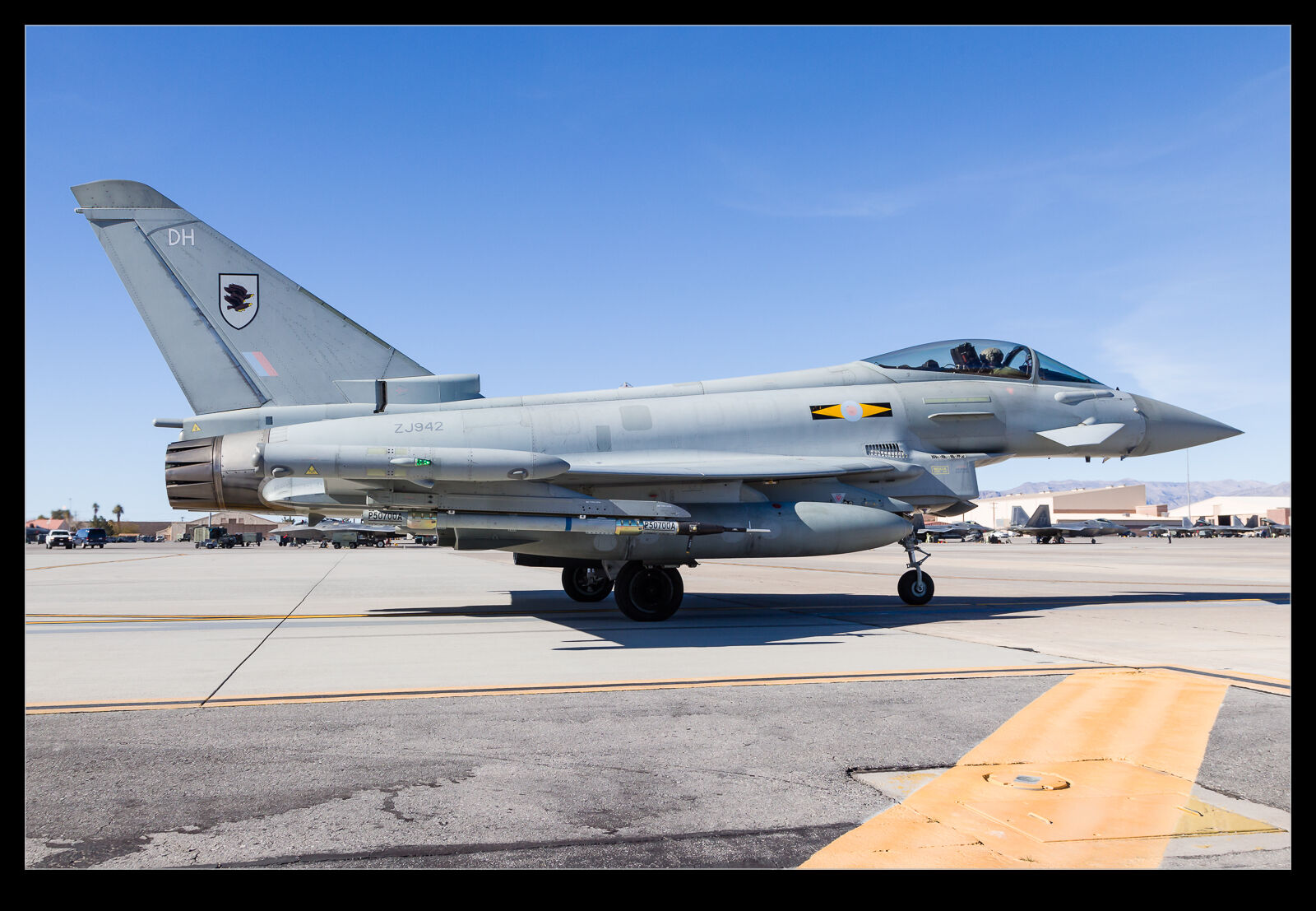 Back on topic, the Typhoon is something I am very pleased to have worked on. Getting to see them in action is great. The launches when we were out by the runways were great. When we were by the EOR, we were directly across from the ramp that the Typhoons were using so I managed to see them crewing up for the launch. Then, of course, they had to come right by us as they taxied out. I know it was a long time ago but I can’t help but still have a soft spot for them when I see them in use.
Back on topic, the Typhoon is something I am very pleased to have worked on. Getting to see them in action is great. The launches when we were out by the runways were great. When we were by the EOR, we were directly across from the ramp that the Typhoons were using so I managed to see them crewing up for the launch. Then, of course, they had to come right by us as they taxied out. I know it was a long time ago but I can’t help but still have a soft spot for them when I see them in use.
- Two Royal Air Force Typhoon fighters make final checks on the ramp at Nellis AFB Las Vegas Nevada as part of a Red Flag mission.
- A Royal Air Force Typhoon fighter on final approach to Nellis AFB Las Vegas Nevada as part of a Red Flag mission.
- Two Royal Air Force Typhoon fighters await takeoff clearance at Nellis AFB Las Vegas Nevada as part of a Red Flag mission.
- A Royal Air Force Eurofighter Typhoon turns on to final approach at Nellis AFB Las Vegas Nevada after a Red Flag mission.
- A Royal Air Force Eurofighter Typhoon turns on to final approach at Nellis AFB Las Vegas Nevada after a Red Flag mission.
Cartmel Priory
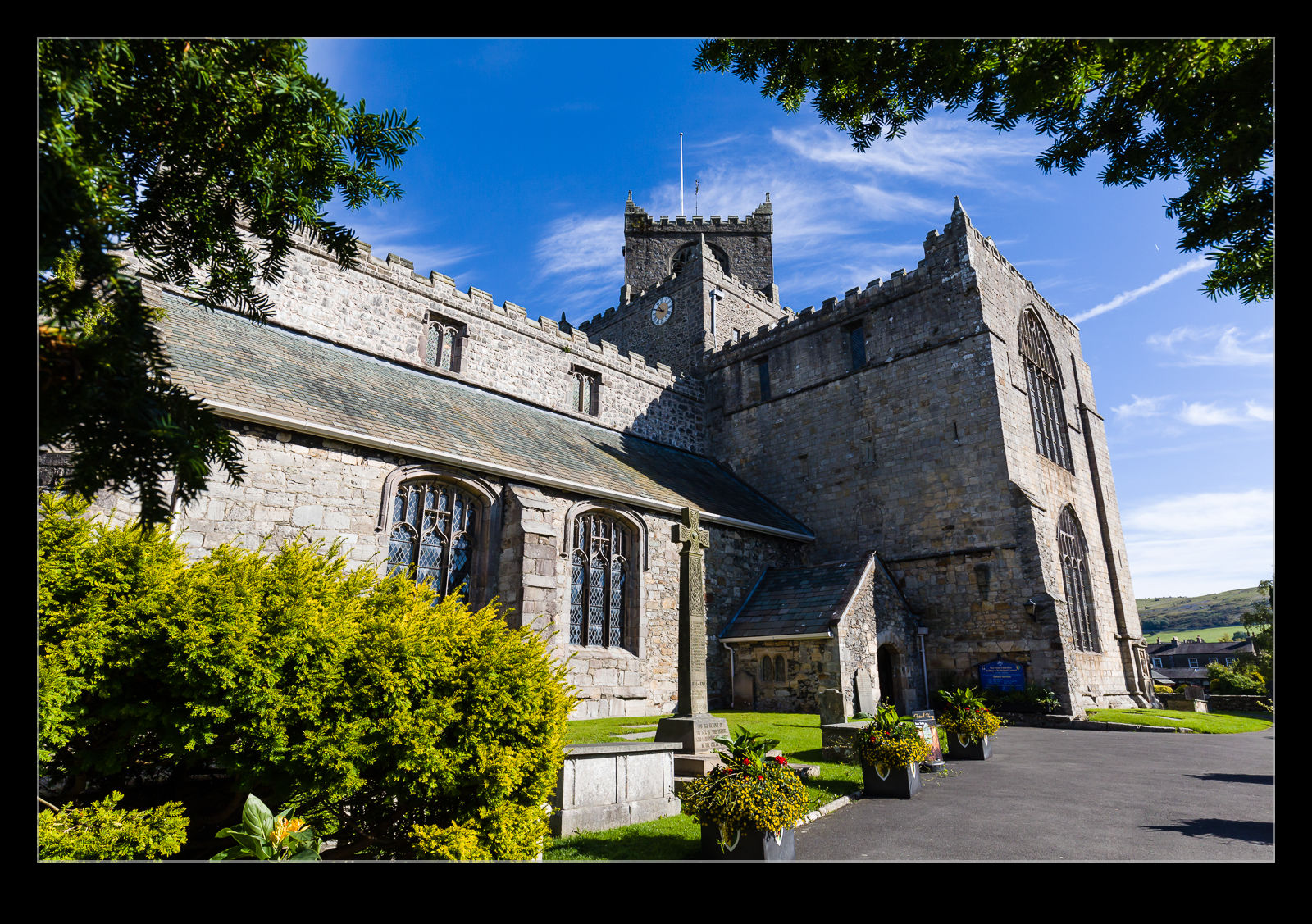 While Cartmel now seems like a pretty sleepy town, it once was a bustling center of commerce. The Priory was the heart of a local agricultural economy. While that might have changed a lot, the Priory itself is still an impressive structure and reminder of how things had once been very different. While not as grandiose as some of the UK’s cathedrals, it is still a pretty grand building to come across in an otherwise small town.
While Cartmel now seems like a pretty sleepy town, it once was a bustling center of commerce. The Priory was the heart of a local agricultural economy. While that might have changed a lot, the Priory itself is still an impressive structure and reminder of how things had once been very different. While not as grandiose as some of the UK’s cathedrals, it is still a pretty grand building to come across in an otherwise small town.
Ullswater
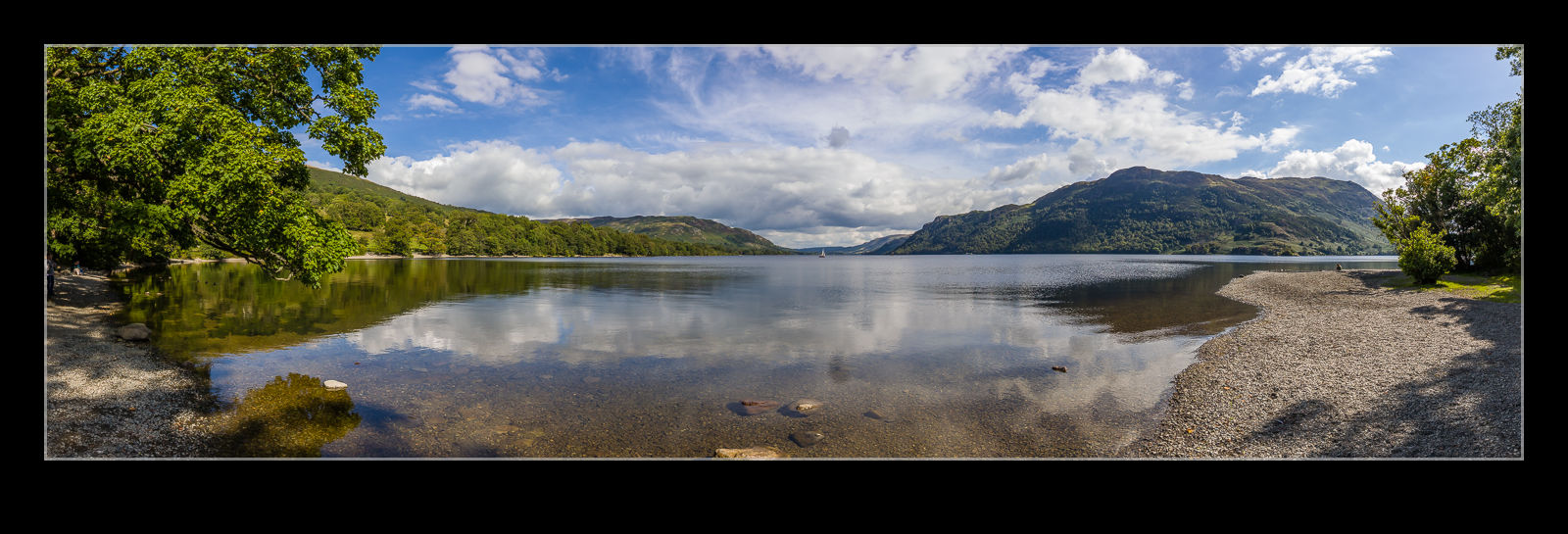 Ullswater is gorgeous. Not a lot more to say to be honest. A large lake surrounded by impressive hills. Add a sunny day and what more could you want. This place is lovely and, since it is not on a main thoroughfare, once you are out of the main tourist season, it is not terribly busy. What more could you ask for?
Ullswater is gorgeous. Not a lot more to say to be honest. A large lake surrounded by impressive hills. Add a sunny day and what more could you want. This place is lovely and, since it is not on a main thoroughfare, once you are out of the main tourist season, it is not terribly busy. What more could you ask for?
Boating on the Lake
Caves Above Rydal
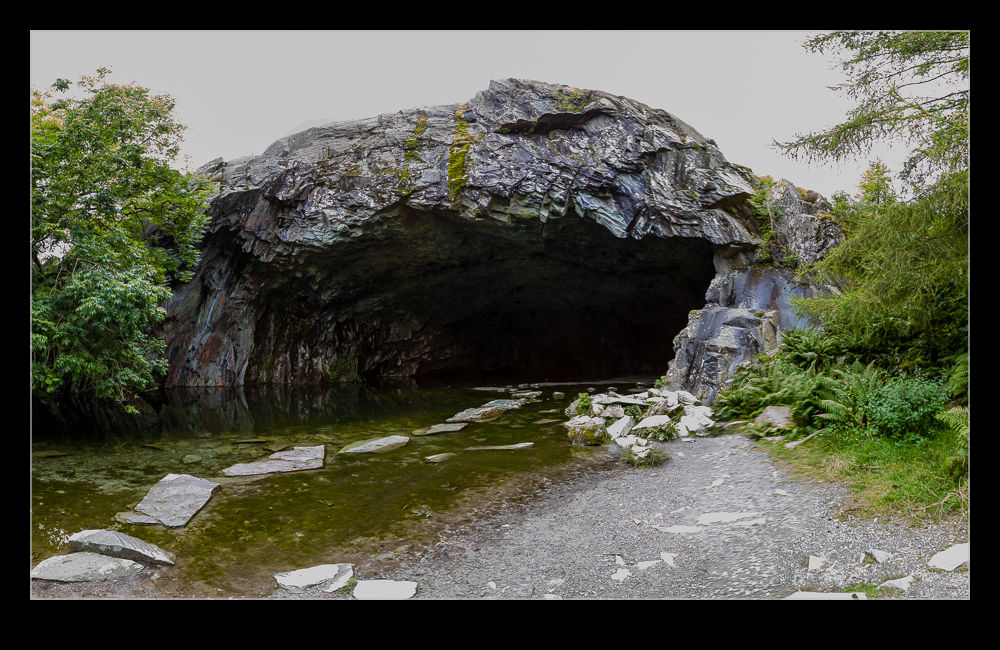 As we turned back towards Grasmere from Rydal, the path took us up the hill to the overlook of Rydal Water. At the top of the hill was a large cave. I have no idea whether it is natural or the result of some quarrying or extraction activity. It doesn’t really matter. It was a pretty large cave with plenty of water covering a lot of the floor.
As we turned back towards Grasmere from Rydal, the path took us up the hill to the overlook of Rydal Water. At the top of the hill was a large cave. I have no idea whether it is natural or the result of some quarrying or extraction activity. It doesn’t really matter. It was a pretty large cave with plenty of water covering a lot of the floor.
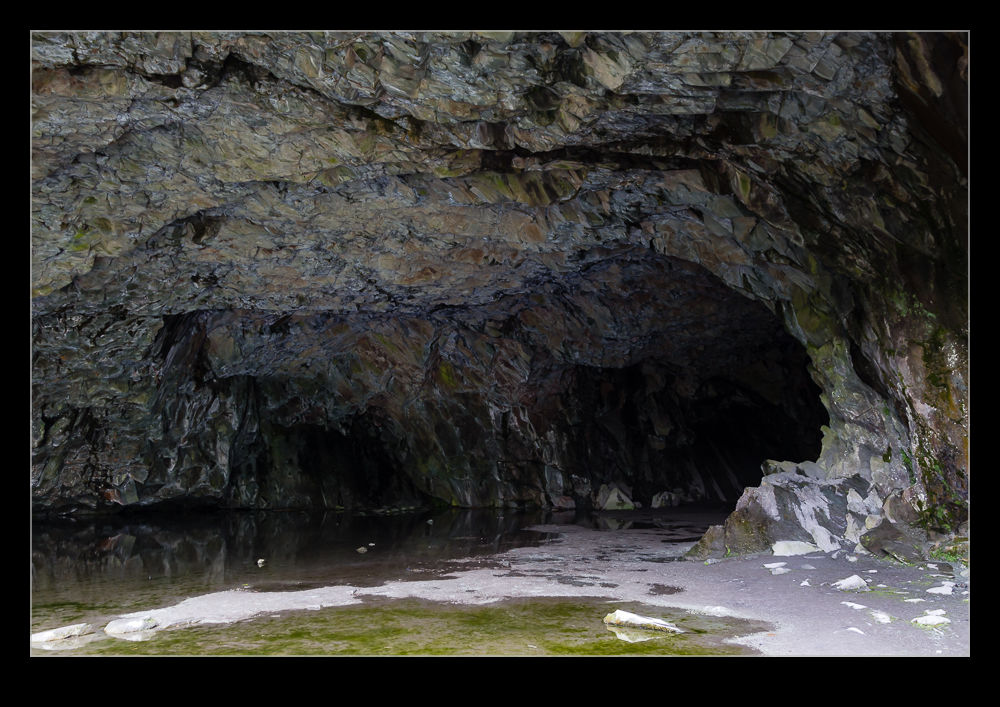 Getting shots of the cave made for a challenge. It was pretty large and way too big for the lens I was carrying for the hike. Therefore, I went with a pano stitch to cover the full thing. However, this brought in the other limitation of the shot. The range of light between the sky and the entrance to the cave was way too large for a raw conversion to cope with. Going with HDR combined with such a large pano stitch seemed like more hassle than I wanted to deal with for what was really just a vacation snap shot.
Getting shots of the cave made for a challenge. It was pretty large and way too big for the lens I was carrying for the hike. Therefore, I went with a pano stitch to cover the full thing. However, this brought in the other limitation of the shot. The range of light between the sky and the entrance to the cave was way too large for a raw conversion to cope with. Going with HDR combined with such a large pano stitch seemed like more hassle than I wanted to deal with for what was really just a vacation snap shot.
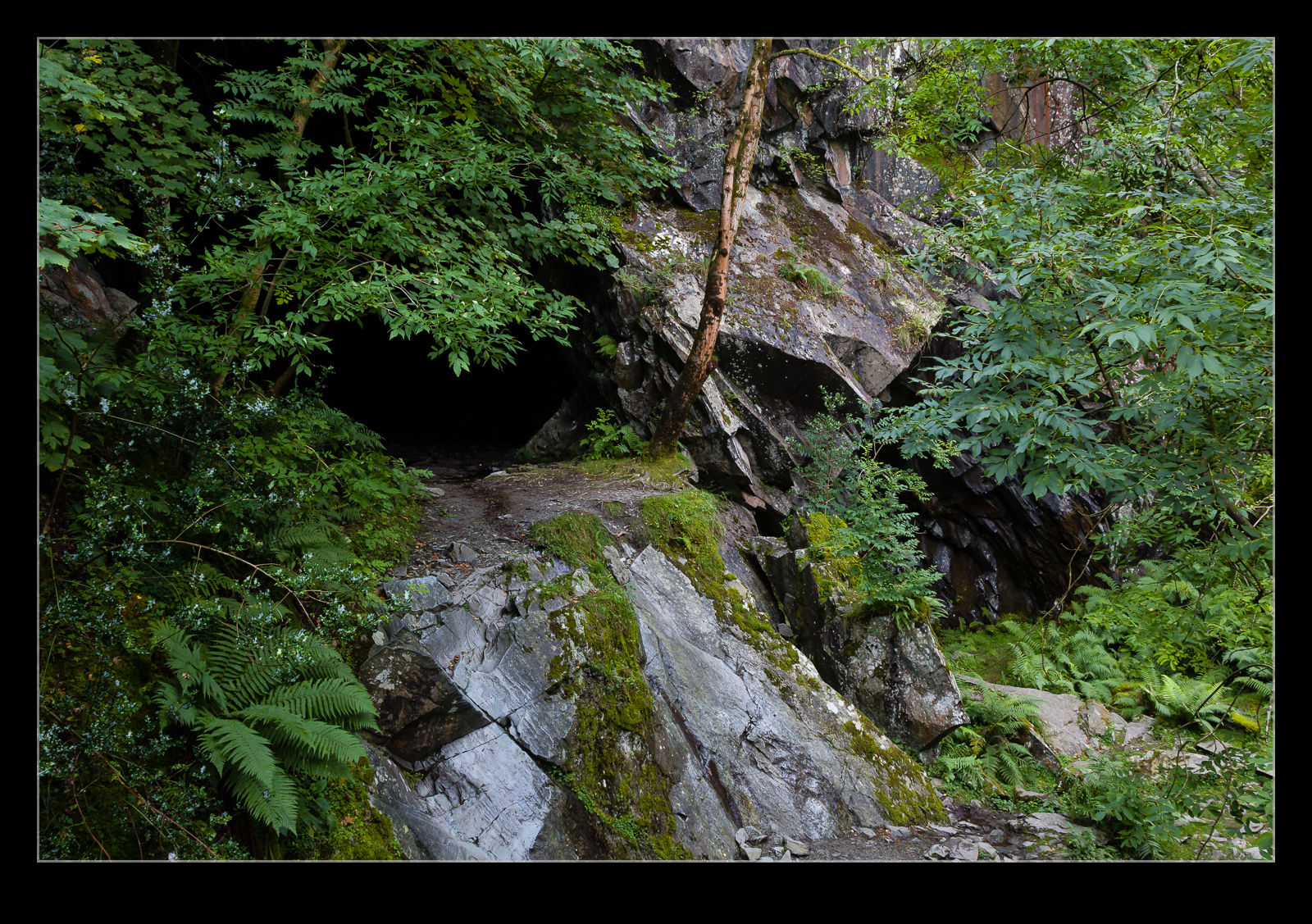 I did head in to the entrance of the cave a short distance to see how far it went back. My cameras may be rather old and left in the dust by the modern bodies when it comes to high ISO shooting but they can still do a reasonable job of picking out the detail in a very dingy environment.
I did head in to the entrance of the cave a short distance to see how far it went back. My cameras may be rather old and left in the dust by the modern bodies when it comes to high ISO shooting but they can still do a reasonable job of picking out the detail in a very dingy environment.
Cartmel
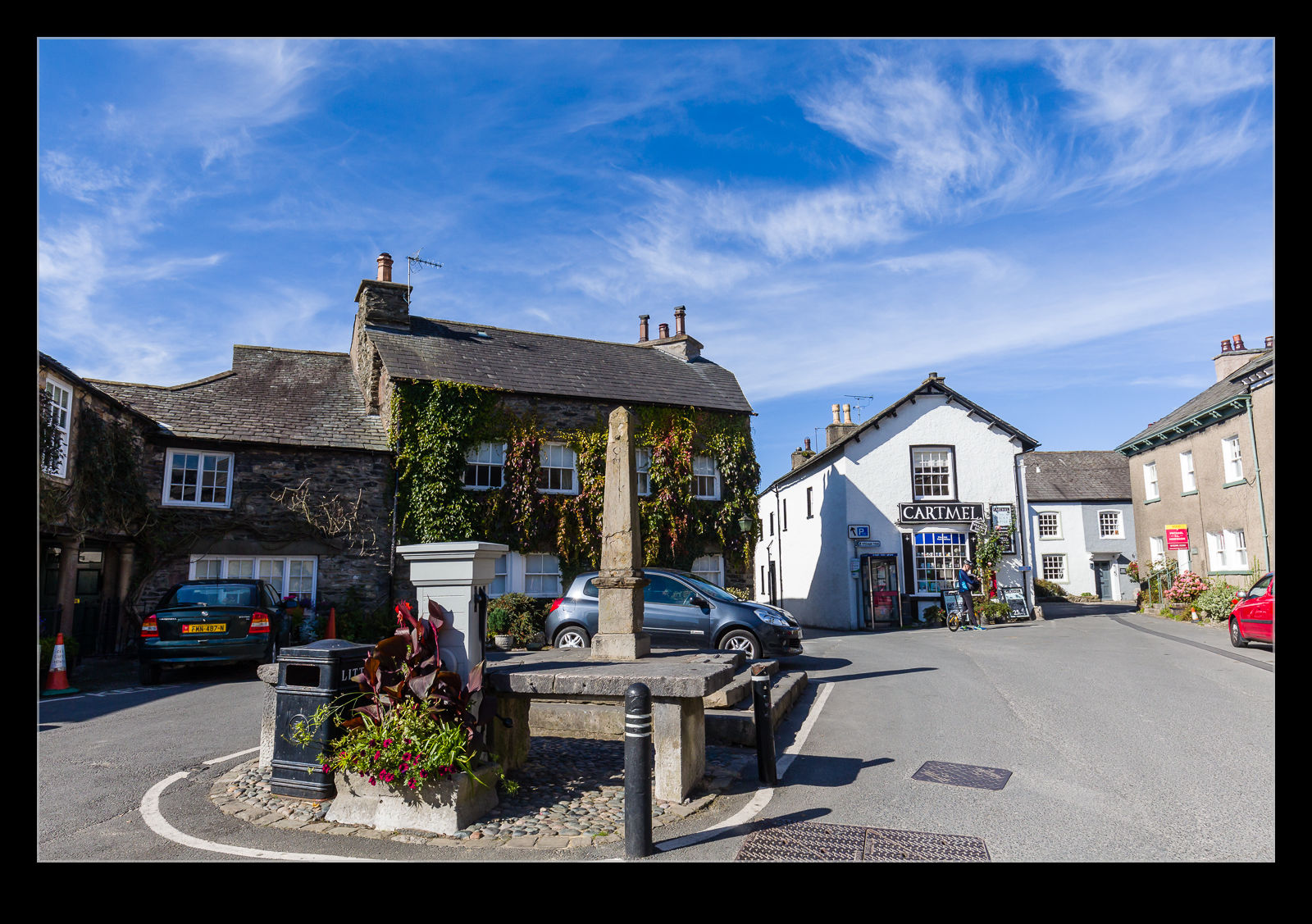 Cartmel is a small town at the south end of the Lake District. There is a food shop there that specializes in something Nancy wanted to take home which was why we were there in the first place. Of course, we had to take a look around while we were there. Apart from the center of the town and the Priory (of which more in another post), the town is particularly well known for having a race course. We weren’t there during a meet but we did park in an area that involved driving over the end of the race course itself.
Cartmel is a small town at the south end of the Lake District. There is a food shop there that specializes in something Nancy wanted to take home which was why we were there in the first place. Of course, we had to take a look around while we were there. Apart from the center of the town and the Priory (of which more in another post), the town is particularly well known for having a race course. We weren’t there during a meet but we did park in an area that involved driving over the end of the race course itself.
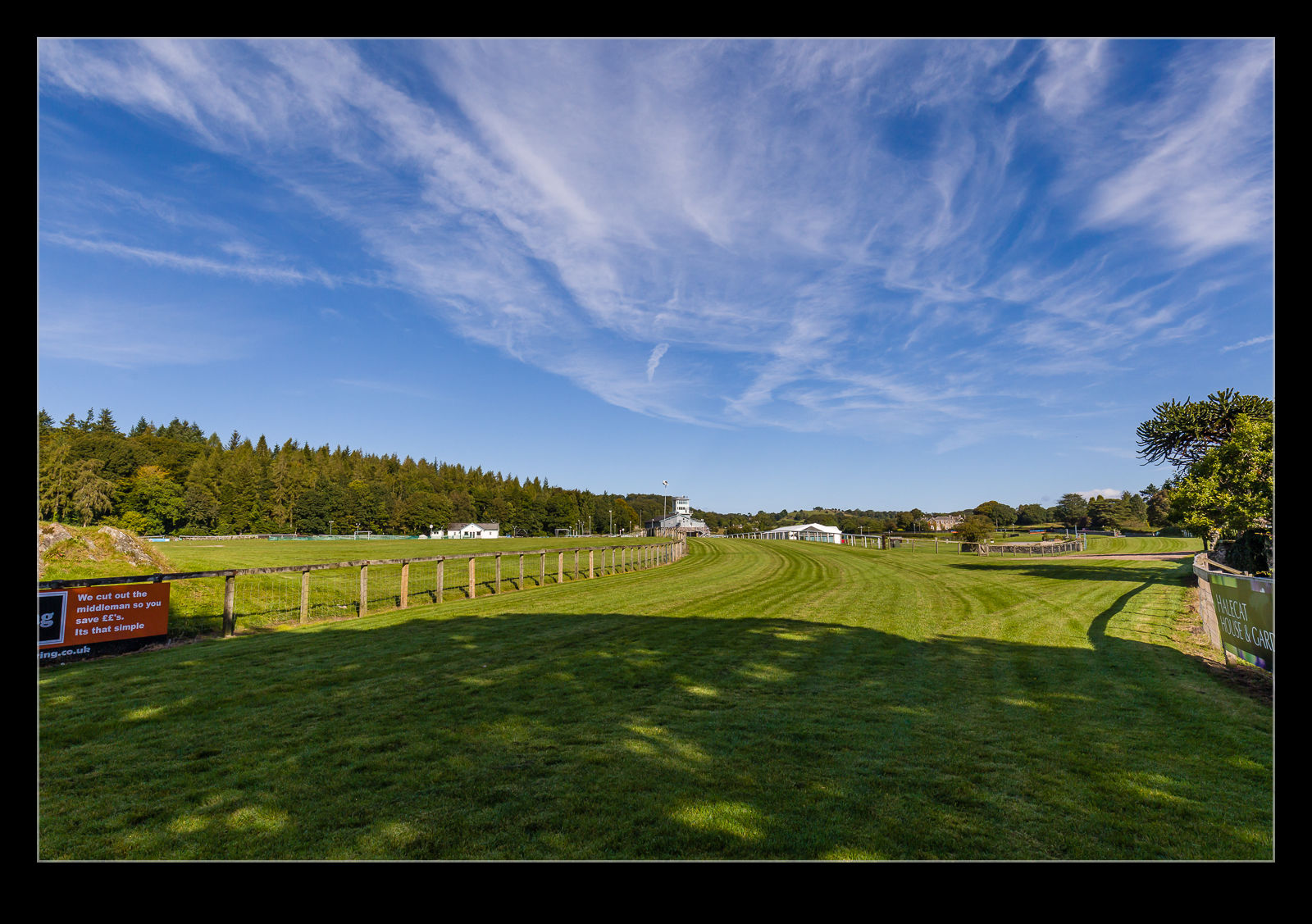 As you walk across the track, so can see up to the starting locations and the finishing straight with the grandstand. The grass was in excellent condition. It appeared to be a course that included flat racing and hurdles although I have never been there during a meet so don’t know which type of racing is most common. Looking up the straight, you could imagine a bunch of horse thundering towards you with the crowds cheering and hoping for a big win.
As you walk across the track, so can see up to the starting locations and the finishing straight with the grandstand. The grass was in excellent condition. It appeared to be a course that included flat racing and hurdles although I have never been there during a meet so don’t know which type of racing is most common. Looking up the straight, you could imagine a bunch of horse thundering towards you with the crowds cheering and hoping for a big win.
